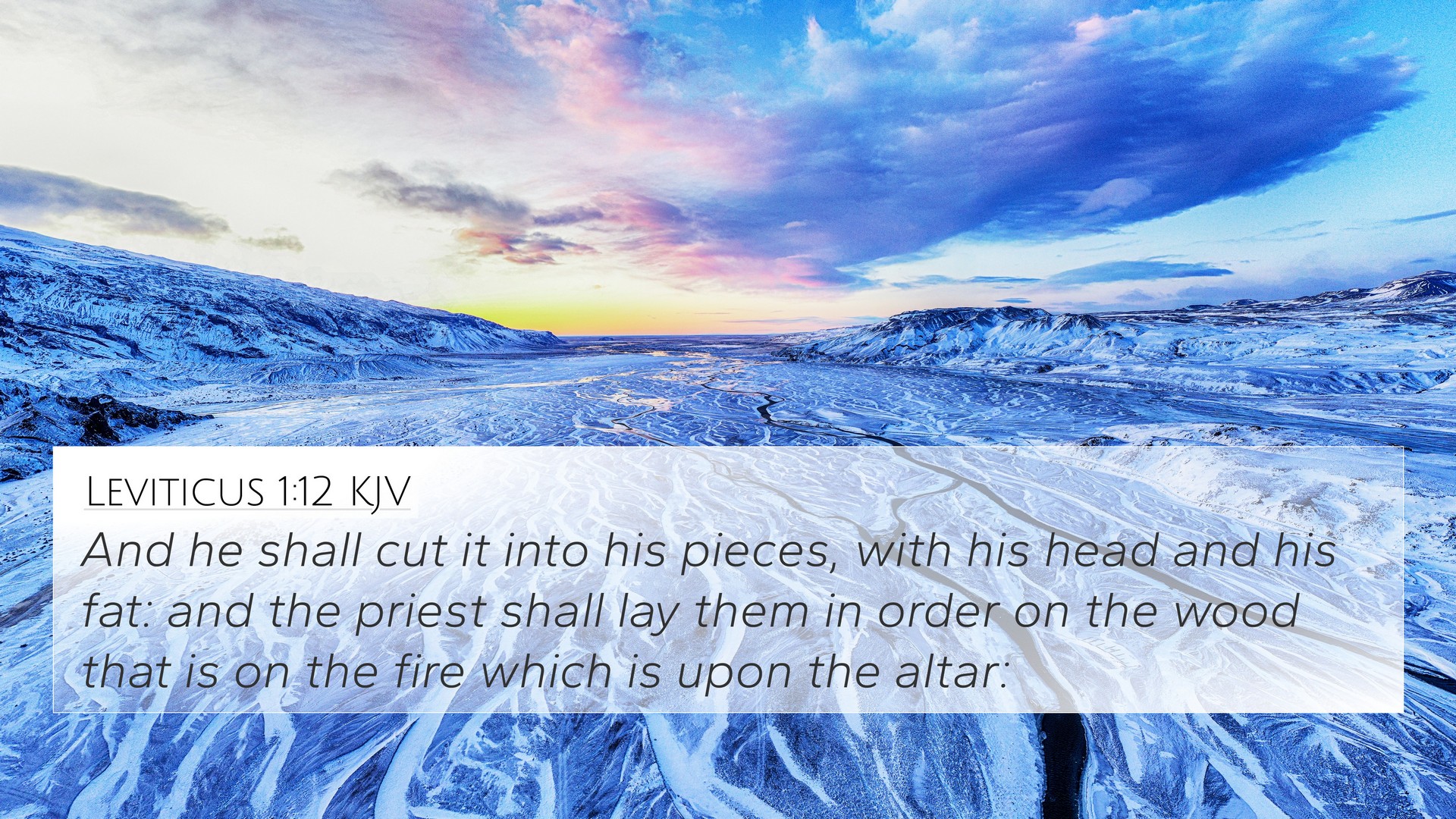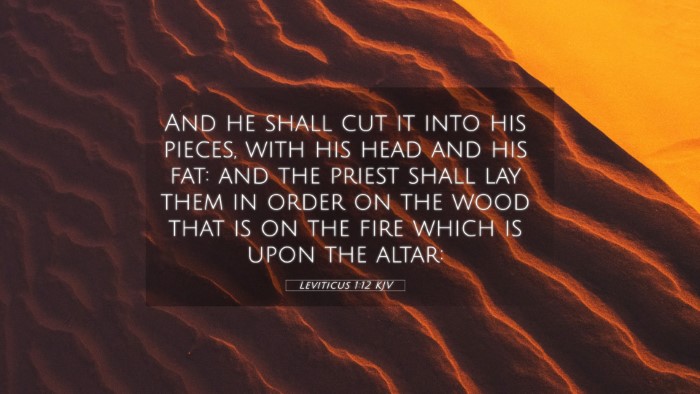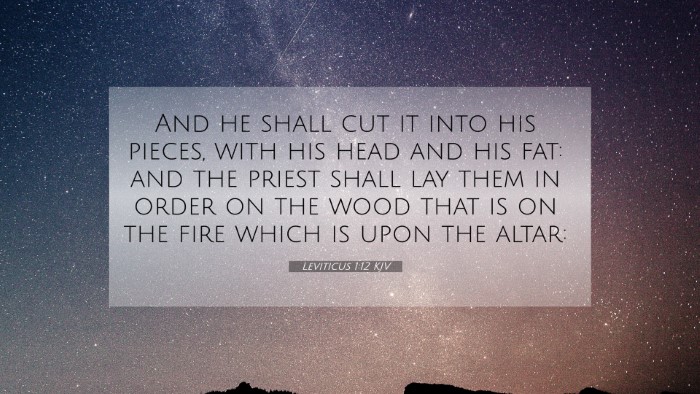Understanding Leviticus 1:12
Leviticus 1:12 (ESV): "And the part of the sacrifice that he shall offer is the head; and he shall burn it on the altar, and the ashes from the head shall be washed away from the altar." This passage is part of the laws regarding burnt offerings, which holds significant importance in the sacrificial system of ancient Israel.
Summary of Insights
This verse describes the specific part of the burnt offering that was to be presented to the Lord, emphasizing the ritualistic aspects of worship in the Old Testament. The head of the animal is singled out as a key aspect of the offering, indicating the importance of giving the best to God. The subsequent disposal of the ashes is also vital to maintaining the sanctity of the altar.
Commentary Insights
-
Matthew Henry:
Henry emphasizes the nature of the sacrifices, noting that they signify the devotion and surrender of the offerer to God. He points out that offering the head symbolizes honouring God with the first and best, representing the offerer's submission.
-
Albert Barnes:
Barnes comments on the symbolic significance of the head, representing both authority and submission. He explains that the presentation of the head offered a sign of the worshiper's intention of bringing forth the entirety of themselves to God.
-
Adam Clarke:
Clarke elaborates on the ritual of burning the offering, suggesting that this process serves as an atonement for sin and a means of purification, illustrating the grace of God in accepting the offering as a symbol of faith and devotion.
Cross References
In exploring the connections between Bible verses, Leviticus 1:12 relates to several other Scriptures that elucidate similar themes of sacrifice and dedication to God. Here are key cross-references:
- Genesis 4:4: Abel's offering was accepted because he brought the best of his flock, showcasing the principle of valuable offerings.
- Leviticus 4:32-35: Details the sin offering, highlighting the importance of atonement through sacrifice.
- Romans 12:1: Encourages believers to present their bodies as living sacrifices, connecting Old Testament sacrifices to New Testament living faith.
- Hebrews 9:22: Acknowledges that without the shedding of blood, there is no remission of sin, underscoring the need for sacrifices.
- 1 Peter 1:19: Refers to Christ’s sacrifice as precious, linking the sacrificial system with the ultimate sacrifice of Jesus.
- Matthew 5:23-24: Jesus teaches the importance of reconciliation before offering gifts at the altar, implying the holistic nature of true worship.
- Psalm 51:17: Recognizes that God desires a broken spirit and a contrite heart more than sacrifices, emphasizing internal devotion.
- Exodus 29:10: Describes the ritual of consecration for priests, illustrating the holiness required in offerings.
- Isaiah 53:7: Prophecies about Jesus as the Lamb led to slaughter, foreshadowing the ultimate fulfillment of sacrificial themes.
- Philippians 4:18: Paul speaks of his offerings as a fragrant sacrifice, echoing the imagery of Levitical offerings as pleasing to God.
Conclusion
Understanding Leviticus 1:12 involves recognizing the integral role of sacrifices in the Old Testament and how these points foreshadow the greater sacrifice of Christ in the New Testament. The link between various Biblical texts not only enriches our comprehension of Leviticus 1:12 but also offers profound thematic connections that span both Testaments. Leveraging tools for cross-referencing can enhance our study, allowing for a deeper look into the tapestry of scripture that celebrates God's plan for redemption and reconciling mankind to Himself.
Using Cross-References for Deeper Understanding
To further enhance your understanding of Biblical themes, one might consider the following:
- Utilizing a bible concordance or a bible cross-reference guide to trace similar themes across scripture.
- Engaging in cross-referencing Bible study methods that connect seemingly disparate passages.
- Exploring inter-Biblical dialogue through careful comparative Bible verse analysis.
- Identifying themes and drawing bible verse parallels in both Old and New Testament teachings.
- Pursuing detailed cross-references to aid in sermon preparation or personal study.


